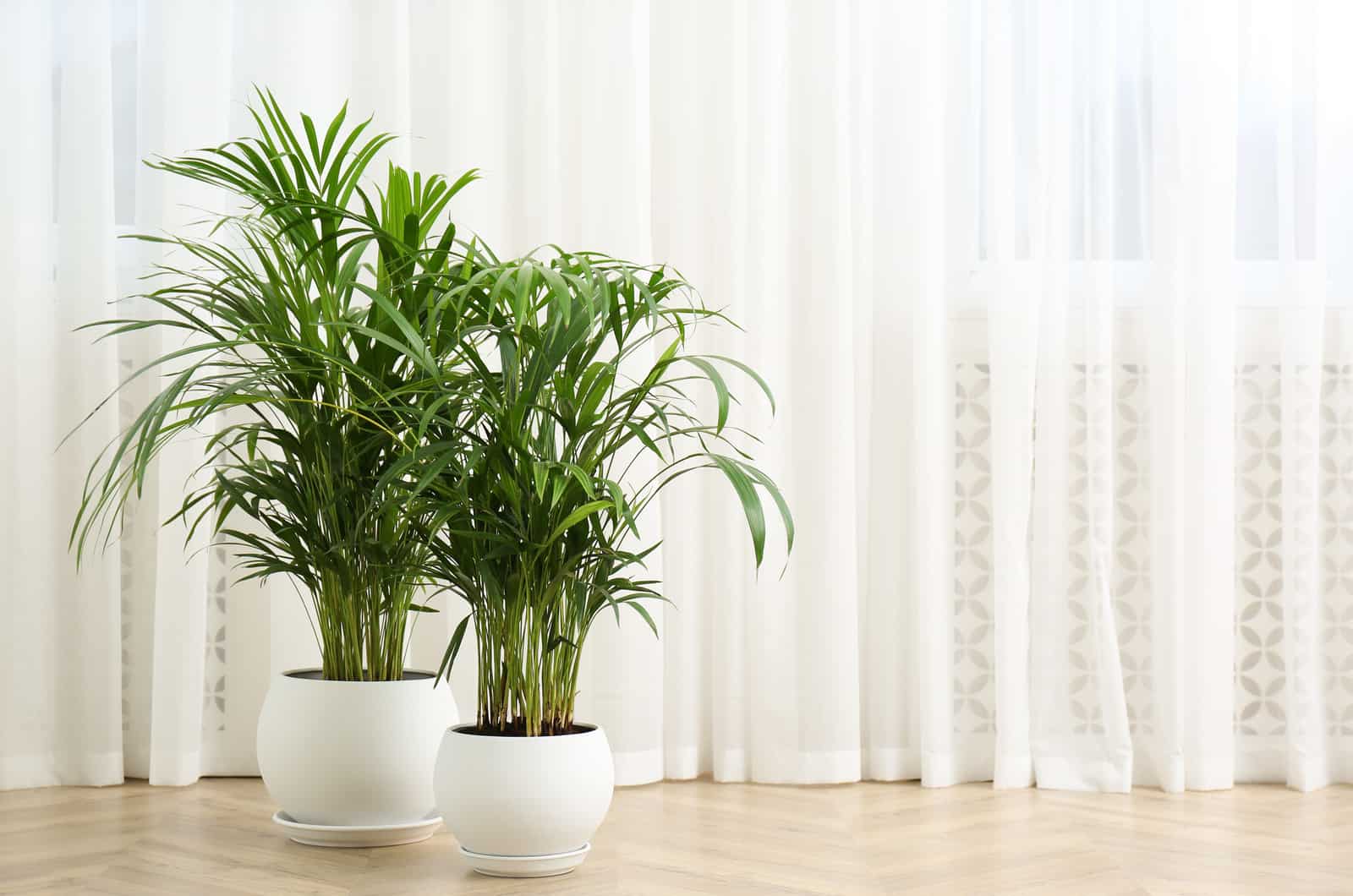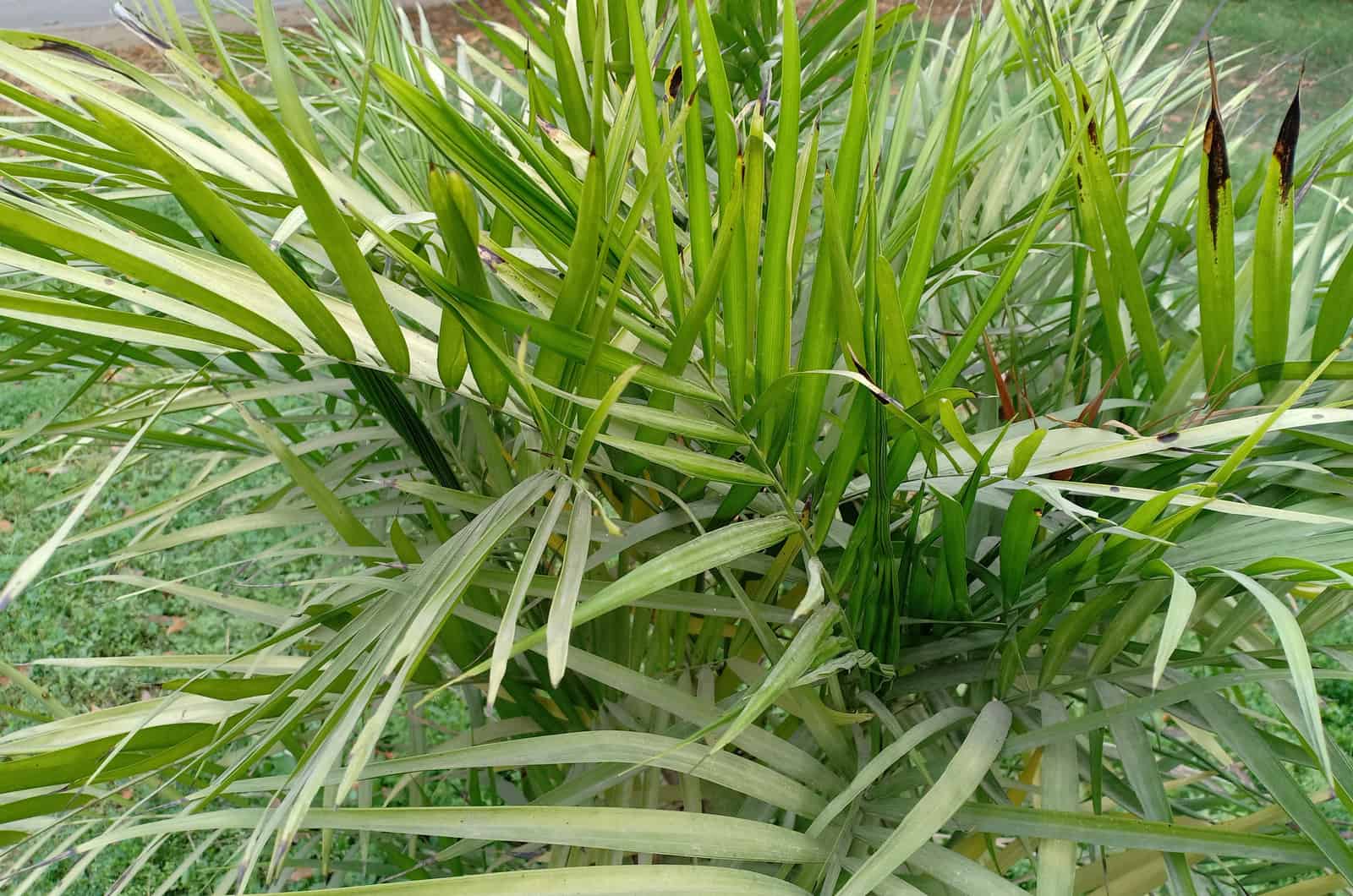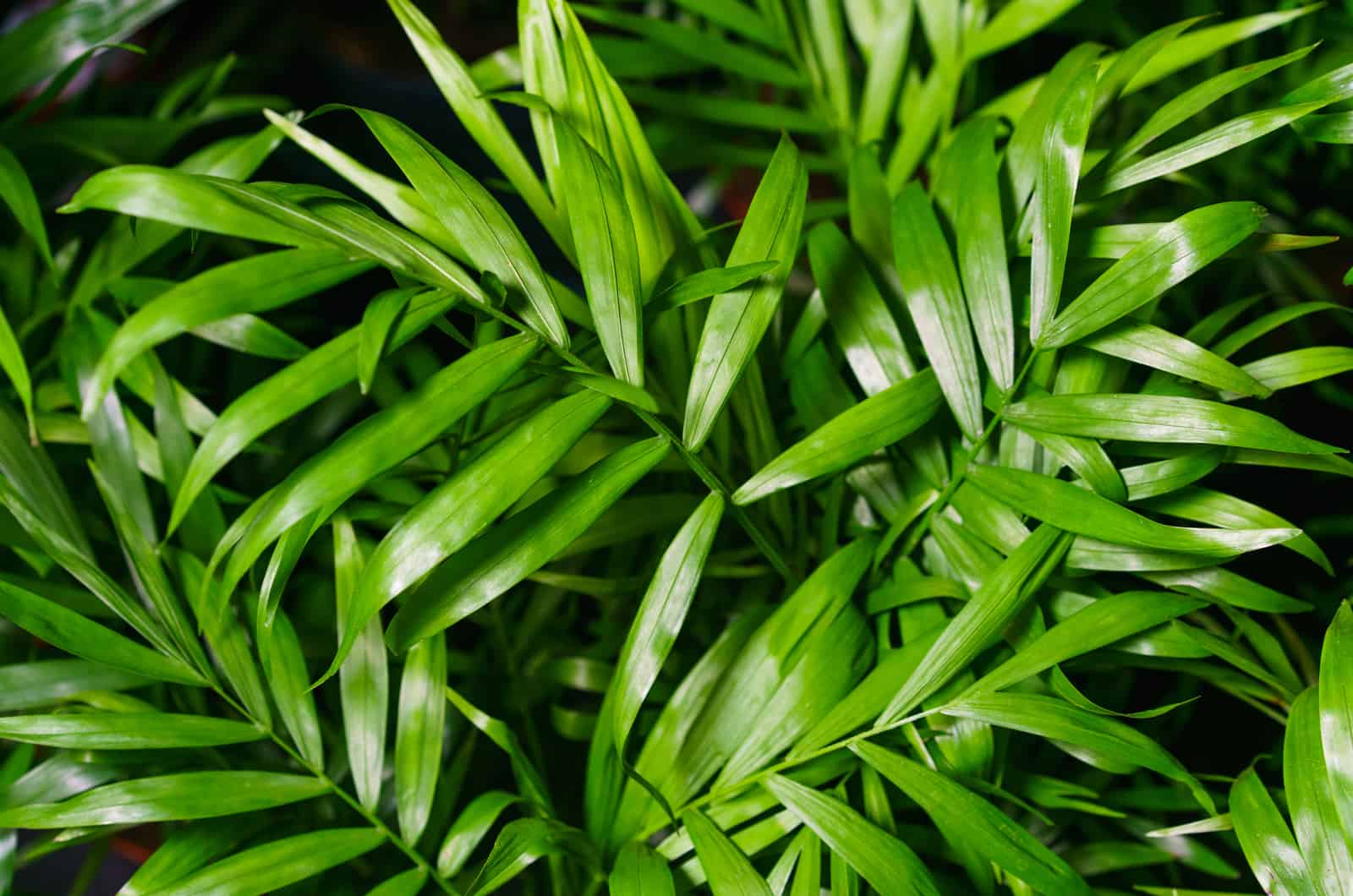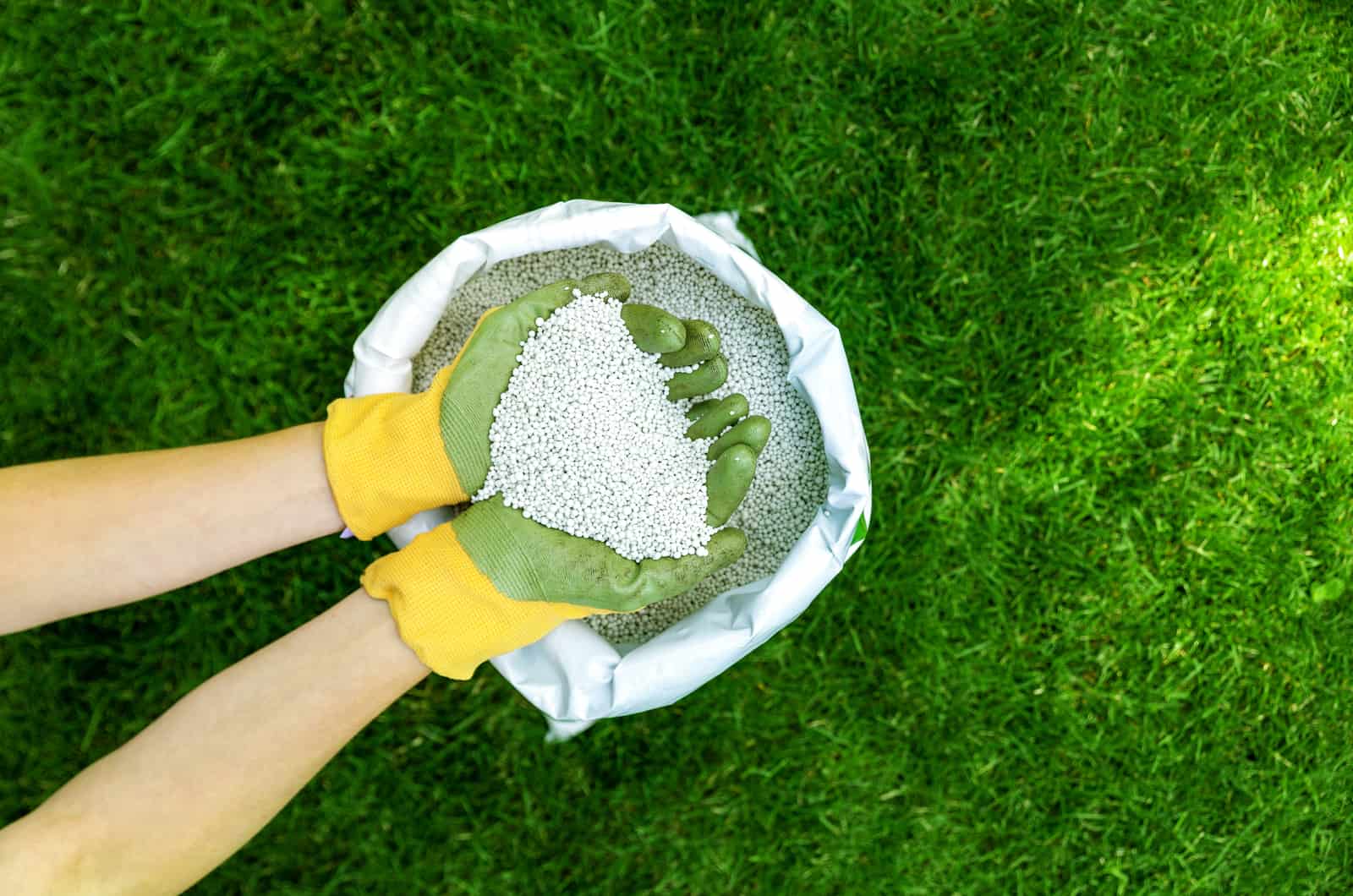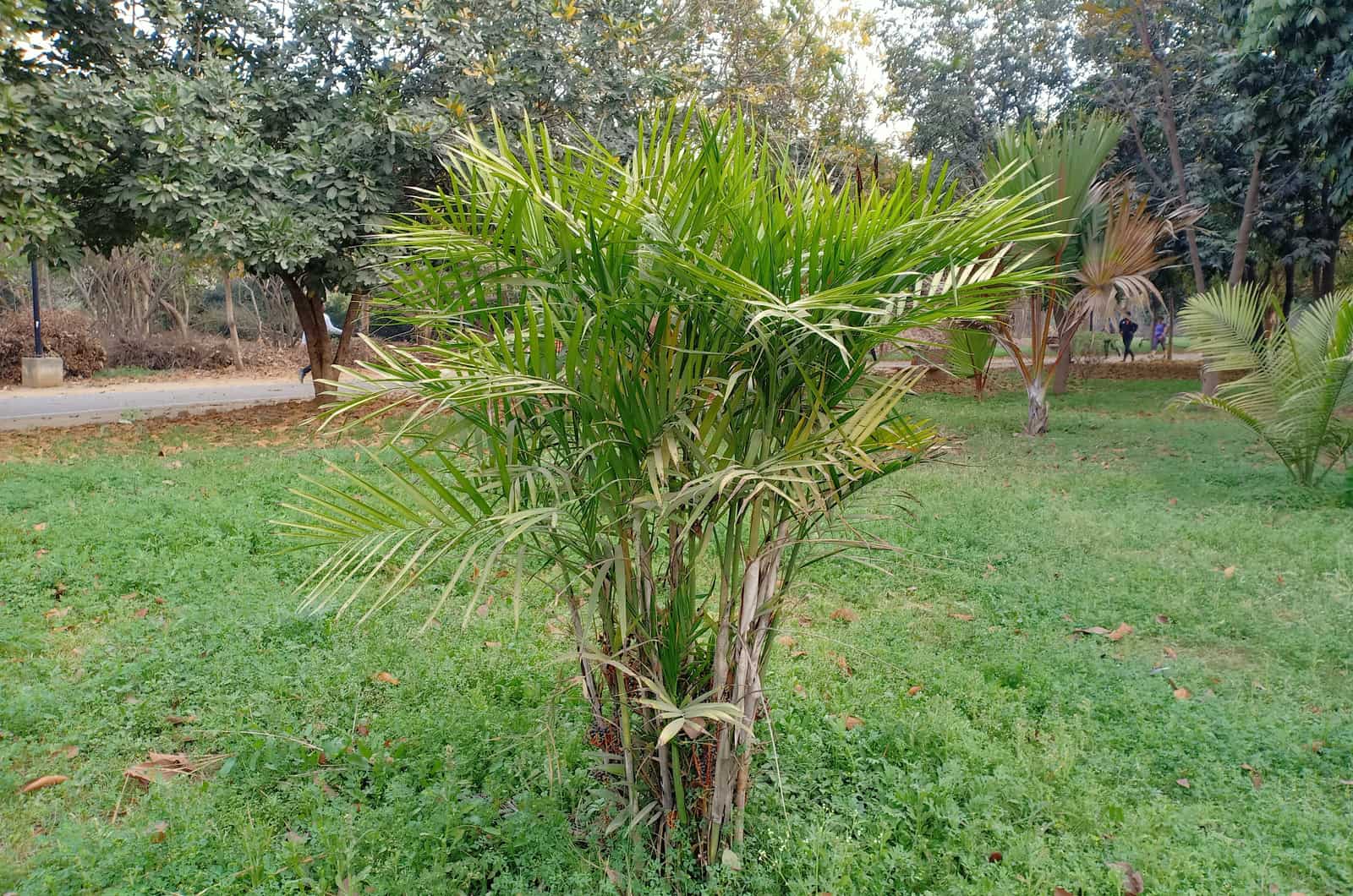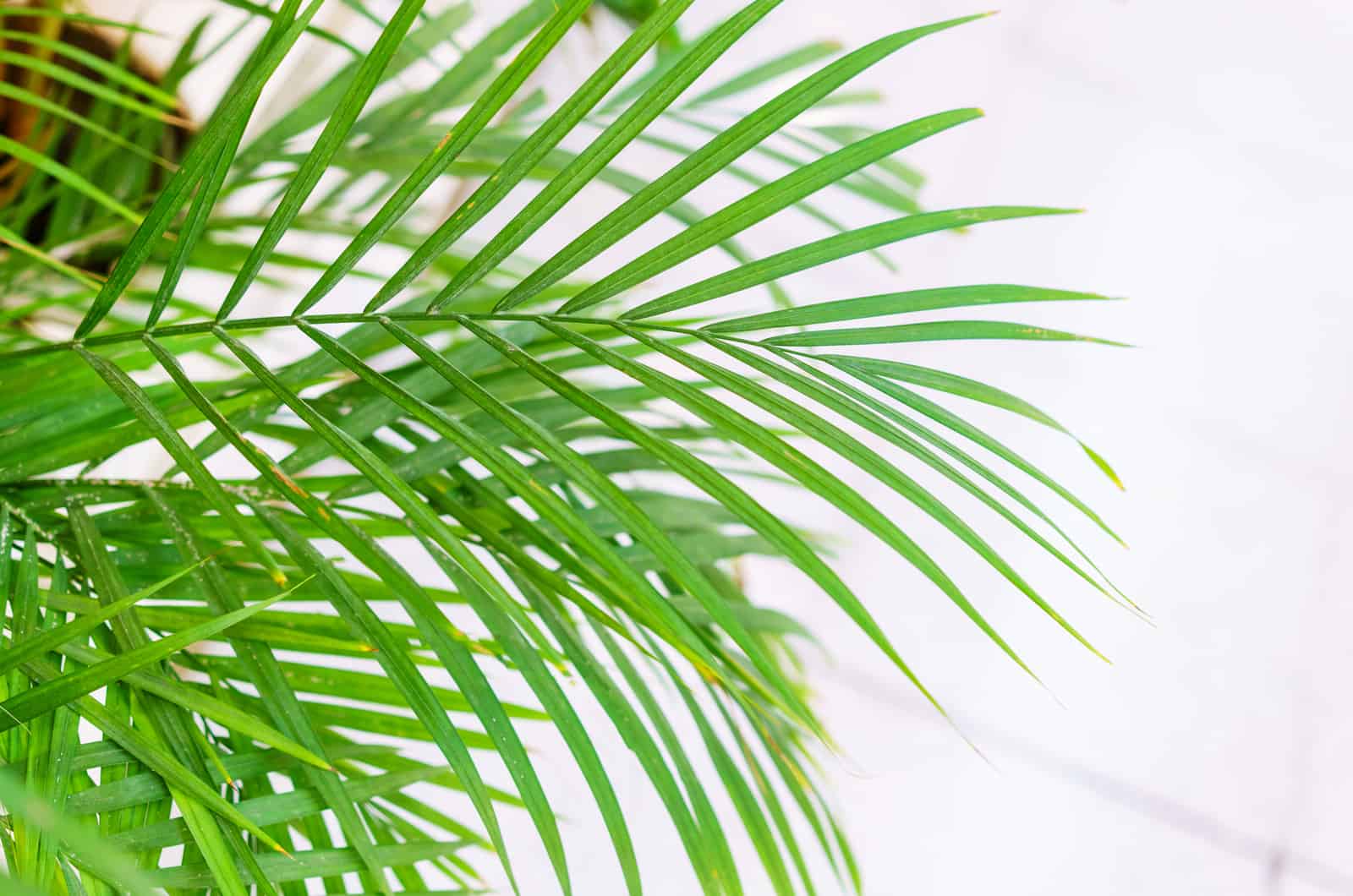Looking for tropical indoor plants to make your living space more lively; or are you trying to grow a mini jungle in your garden?
If so, then the Cascade palm is an ideal plant for you!
The essence of all jungles are palm trees, so what other plant would be perfect for your home jungle than indoor palm plants? The Cascade palm grows dense pinnate, dark green leaves, and it can grow about 3 feet tall (if it has enough space, it can grow about 8 feet tall!).
Read on to learn more about the Cascade palm, how to grow it and what the common problems are.
What is a Cascade palm?
Botanical names for the Cascade palm are Chamaedorea Cataractarum and Chamaedorea Atrovirens, although it is also known as a Cat palm tree, and Cataract palm. It originates from the jungles of Central America, and today it is widely distributed — usually in the USDA hardiness zone from 6 to 12.
These trunk less palms grow pinnate leaves with a dark green color and glossy texture; they grow densely, and can be used to fill out those empty spaces in your backyard jungles; and they are sometimes even grown as a hedge (that is, if you plant Cascade palms close to one another).
The Cascade palm is perfect for home decor, especially for filling up the empty corners of the room, and you can grow them in elegant containers to create a natural art piece for your living space. You can make a small island in your garden by planting these palms, or put them in a driveway to make the concrete look more lively!
The good thing is that Cascade palms are not toxic, so you won’t have to worry about your kids or pets eating them and causing trouble.
When you are dealing with tropical plants, you have to mimic their tropical environment: they love moist soils, partial shades, indirect lights and so on; and therefore, they are high maintenance plants that require special plant care.
How To Grow A Cascade Palm
If you are planning on growing your Cascade palm outdoors, bear in mind that you will have to bring it inside during the colder, winter months if you live in an area that has cold winters. Before planting, you have to take into consideration the area where you want to plant your new palm tree.
Follow the guide below if you want to successfully plant and grow your Cascade palm plant.
How To Plant A Cascade Palm
After you have bought your new plant, you will have to find the right spot to plant it. Your new Cascade palm will be small, about 1 feet tall, and it is ready to be transplanted.
If you are planning to grow the plant indoors, you will have to transplant it into a new, larger container in appropriate soil. It is important that the container has drainage holes at the bottom (if you have bought the one that does not have drainage holes, you can drill them yourself).
However, it’s a bit different when you want to plant it outside.
First, you have to find the right spot for your new plant: the Cascade palm thrives in partial shade, so you will have to consider planting it under trees that can create shade for your plant.
Make sure that the climate in your region is appropriate for outdoor Cascade plants: they will require a temperature that does not drop below 60 degrees Fahrenheit (low temperature and frost can kill your palm plant).
If you want to create a hedge with your Cascade palms, you can plant them about 3 feet apart because the foliage from both plants will grow densely and create a private space for your garden; otherwise, keep them further away from one another or plant a single palm tree to fill the empty space in your garden.
If your goal is to have a mini jungle in your garden, then you can plant some other plants like an Areca palm, Bamboo palm, Yucca and Majesty palm, or even a snake plant might be a fun addition to your outdoor jungle!
How To Take Care Of A Cascade Palm
Whether you are growing your Cat palm outdoors, or as a houseplant — if you want your plant to be happy and healthy, it is important to treat it with the proper care!
Now, let’s take a look into the different requirements of a Cascade palm plant, and how to provide them with the best plant care!
Soil Requirements
The Cascade palm will thrive in a well-draining, nutrient-rich potting soil that is able to retain moisture. Since they are tropical plants, they like to have a somewhat moist soil, not too dry, or too soggy as this may lead to root rot.
The best soil type would be loam or sandy soil with adequate drainage; if your soil is too compact, like clay, you can add peat moss or sand to loosen it a bit. You should avoid growing them in soggy and arid soil because this will just impede the growth.
If you want, you can try and make a few different potting soil combinations: for instance, you can mix sand, peat and bark; you can use regular potting soil and add cactus soil and perlite as well, or you can mix African violet mix with garden loam!
Light Requirements
As we have previously mentioned, these types of plants love growing in partial shade to low light conditions. If you are growing the Cat palm indoors, I would suggest that you find a place with bright and indirect sunlight. For instance, south or east-facing windows would be the best placement for your plant.
If you are growing it outdoors, the best area would be in partial shade as well. However, they can tolerate a bit of direct sunlight. If the Cascade palm grows in full sun throughout the day, the leaves might get burned and moisture is quickly lost, so I would suggest you avoid those areas.
Water Requirements
Watering is always tricky with these kinds of plants, as they prefer to have moist soil constantly, so you can’t create a watering schedule; rather you will have to wait for your plant to tell you when it should be watered.
For instance, you will have to check if two inches of the topsoil has dried: if so, then you should water your Cascade palm; if not, then postpone watering for a few days. You can either use a wooden stick to check the soil, or you can simply use your hands (if you don’t mind getting your hands a bit dirty!).
From my experience, it usually takes a few days for the soil to dry, so I water my potted plant about two times a week, however different factors can influence its watering requirements, such as the size of your palm plant, as well as the temperature: if it is hot and dry, then you will probably have to water it more frequently.
If you are not doing it correctly, your plant will tell you: if the fronds are yellowing, then you might be over watering it; on the contrary, if the leaves are beginning to turn brown, then the issue might be under watering.
Type of water can also cause certain issues: if the fronds are looking kind of burnt even though they haven’t been exposed to direct sunlight, then the problem might be chemicals in your water, especially fluoride. I would suggest you use filtered or distilled water, because they do not contain any harmful minerals or a high salt concentration, which is usually found in tap water.
Temperature Requirements
Cascade palms are not too picky when it comes to temperature, however, they don’t like temperature fluctuations! The ideal temperature range for your Cascade palm is from 70 to 80 degrees Fahrenheit.
When picking a place for your indoor potted plant, make sure not to put it under the air conditioning or next to warm radiators and heating vents, as these can affect its growth and development.
You can also check this short video on ideal plant care for indoor palms:
Humidity Requirements
I think it is already known to all of us that tropical plants absolutely love humidity! Therefore, you should always keep the humidity levels above 50% if you want your Cat palm to have that fresh and healthy glow.
Since the majority of homes don’t have these humidity levels, I would suggest that you invest in a humidifier to boost the humidity. If you want to go in a different, kind of cheaper, direction, you can always mist your plant — misting should be done daily.
Another way that you can level up the humidity is by creating a pebble tray: all you have to do is put some pebbles in a tray and pour water over, then place your plant on top of the pebble tray. As the water evaporates, it will create additional moisture for your plant.
And lastly, you can keep your Cat palm in the bathroom as it is the most humid room in the house (bear in mind that your bathroom should have a window that can provide indirect light for your plant).
Fertilizer Requirements
Tropical plants are not heavy feeders, and often nutrients that are provided in the soil are sufficient enough for optimal growth. However, growers tend to apply a nitrogen-rich fertilizer to encourage the growth of lush foliage, and to improve the overall health of the plant.
Fertilizers should be applied monthly during the growing season — throughout the spring and summer; however, during colder seasons you should fertilize it less frequently.
Bear in mind that the soil should be moist when applying fertilizers, because applying them into dry soil will lead to chemical build up that can damage the roots.
Another issue that can lead to chemical build up in the soil is over fertilizing, so do not fertilize it more frequently than recommended.
For those growers who planted their Cascade palm plant outdoors, make sure to add mulch around the base of the plant if you want to retain moisture and prevent weed growth. Mulching is also important during the colder seasons, because it will keep the soil warm enough for your plant to survive.
Pruning
Pruning is not an essential step in the care guide, as you won’t be needing to prune your palm plant to improve its growth and health (as you do for many other houseplants). You won’t have to worry about the shape either, because a Cascade palm will grow densely and acquire its own unique shape, thus pruning won’t be necessary for maintaining it.
However, you should remove any dead or damaged leaves, especially in the case of infection, to prevent spreading. You can simply use a knife or pruning shears to remove them. Remember that you should always work with sterile gardening equipment!
Repotting
Cascade palms are not fast growers, so you won’t have to worry about repotting them every growing season. These plants should be repotted once in every three years, though you can also look if the roots are coming out of the drainage holes — if so, then the roots don’t have enough space for growth and development and should be repotted to a larger pot.
The best time for repotting the Cascade palms is early spring and summer, so they can have enough time during the growing season to develop and adapt to their new homes!
Buy a larger pot than the previous one and make sure that it has drainage holes at the bottom. You can either buy terracotta, plastic or ceramic pots — all three are suitable for palm plants!
If you are a gardener newbie that does not have enough experience in repotting, you can follow the easy steps below to successfully repot your Cascade palm:
1. The soil should be loosened up prior to repotting, so you should water it the day before to prepare the soil and prevent transplant shock in the plant.
2. The day after watering is a repotting day: start by slowly lifting your palm plant, and make sure not to break any of the roots that have been sticking out of the drainage holes.
3. Then you should remove the old soil gently — do not shake the plant! The roots are extremely fragile and tearing them can send your plant into a state of shock.
4. Place your plant in the new pot: half of the pot should be filled with an adequate potting soil, then place the root ball and add subsequent soil to fill out any empty spaces.
5. Pay close attention to your plant in case of a shock, and water frequently.
How To Propagate A Cascade Palm
Propagation is pretty straightforward when it comes to palm trees, because they produce suckers — the side shoots that develop from the main roots, which tend to grow and develop into a new plant.
If you want to grow a new Cascade palm plant, then you can do it when repotting, to avoid additional stress for your palm plant. Bear in mind that the mother plant should be mature and at least 1 feet tall, and that the propagation should be done in spring, at the beginning of a growing season so your baby plant can grow during those few months!
Here is how you propagate the Cat palm plant:
1. Water your plant a day before propagating, as you would when repotting.
2. Then, you should lift the plant and look for suckers. Use a sterile knife and cut the largest suckers, with the most roots.
3. Your new pot should be already prepared with half-filled, well-draining soil. Put your sucker in and add more soil to cover the roots completely.
4. Water it thoroughly and then cover the pot with a plastic sheet to retain moisture and increase humidity. Keep it in a place with indirect and bright light.
5. Once your new baby plant is established, you can remove the plastic sheet and continue taking care of it as you would a normal Cascade palm.
Common Problems With The Cascade Palm Plant
Since the Cascade palm is a trunk-less plant (no trunk, no problems), you will only be having problems with the leaves — and there are a lot of those… Luckily, these problems can be easily fixed and your plant will be good as new!
We have already mentioned that the leaves are changing color as a consequence of over watering the plant, however, excess water can create some other issues that are much more serious than the leaves changing color, and that is increasing the susceptibility for fungal infections.
Root rot is a dangerous plant disease caused by over watering. If the soil starts to smell funny, and there are spots on the leaves of your plant, then you are probably dealing with root rot, especially if you started watering the plant more frequently.
As soon as you notice any of these symptoms, take out the plant from the pot and immediately inspect the roots: if you notice any damaged roots, chop them off! Change the soil of your plant and hope for the best.
When it comes to pest infestations, your Cascade palm is prone to the pests that love munching on their leaves (as there is no trunk to eat), and they can be spider mites, mealybugs or scales.
These three annoying little creatures absolutely love stealing your plant’s nutrients, and you can spot them by investigating the leaves much more closely: if you notice any spots or discoloration, then you might be dealing with a pest infestation.
You can spray neem oil on the leaves or use an insecticidal soap to fight them off; if you notice any miniature spider webs, then you are dealing with spider mites — in this case, you should mix isopropyl alcohol and water to destroy them!
Frequently Asked Questions
1. How big does a Cascade Palm grow?
The Cascade palm can grow about 3 feet tall when grown indoors; however, if it has enough space it can grow to about 8 feet tall! Prepare yourself for this incredible growth if you are growing it outdoors.
Bear in mind that Cascade palms are not fast growers, so you might have to wait patiently for them to reach a certain height.
2. How far apart do you plant a Cascade Palm?
This depends on what you want to do with it. For instance, if you want to create a hedge with your palm plants, then you should plant them at least 3 feet apart from one another, and as they grow, their foliage will grow densely and create a private space for your garden. Otherwise, plant them more than 3 feet away from each other.
3. What is the lifespan of a Cascade Palm?
Palm trees can live about 7 or 8 decades on average, and this includes a Cascade palm as well. So you won’t have to worry about your palm tree dying from old age!
4. Where can you buy a Cascade palm?
If you are living in a tropical region, you can always go to the gardening shops nearby, I am sure that you will find the Cascade palm there! However, you can also look for it online on Amazon or Etsy.
Final Thoughts
Even though the Cascade palm plants are high-maintenance, they grow beautiful, dense, dark green pinnate leaves that are a must-have for all of you who want to add a bit of tropical style to your home!
Not only do these trunk-less plants have beautiful foliage, but they also grow densely and can be used to create appealing, jungly hedges for much more private areas.
They are easy to propagate, not toxic and susceptible only to a few pests — when you take all of these into account, they are truly worth the special plant care!
In my opinion, if you are an experienced gardener, the plant care should be easy and not cause you any additional troubles.
In case you own a Cascade palm, make sure to post it on Instagram and use one of our palm trees quotes and sayings as perfect captions!
Until next time!

